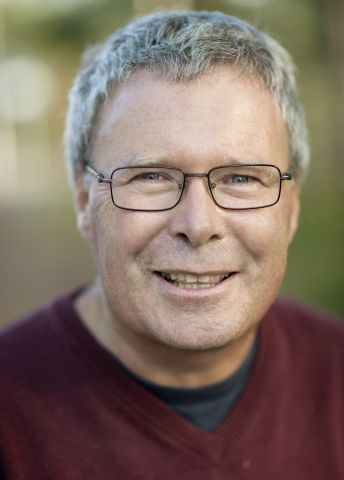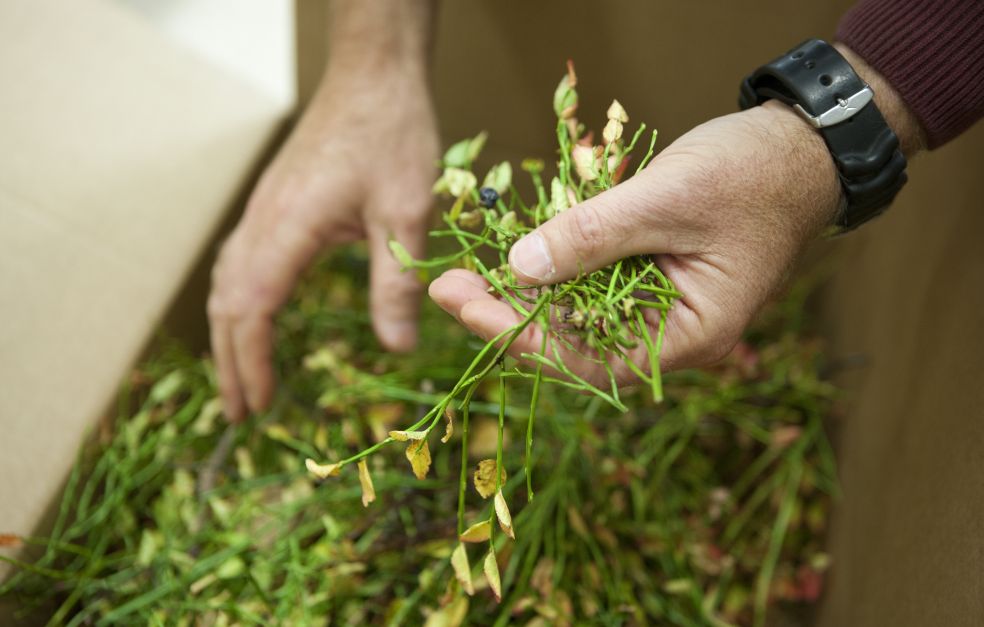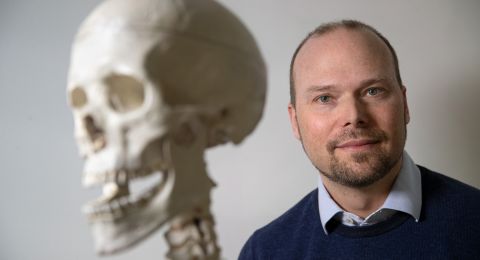Climate changes, forest fires, and newly appearing and disappearing species affect important functions in ecosystems both above and below ground. David Wardle has devoted much of his research career to studying connections in ecosystems and understanding the significance of these changes.
David Wardle
Professor of soil and plant ecology
Wallenberg Scholar
Research field:
How the above and below ground components of ecosystems interact and how this interaction is affected by changes in the environment.
Institution:
Swedish University of Agricultural Sciences, SLU
“There is a great deal of research about the importance of new species and also quite a bit about the loss of species, but few have studied the net effect of these two processes occurring in tandem. It’s important to do this if you want to understand how human activities impact the composition of species in an ecosystem and how this in turn affects the system’s productivity, nutrient cycles, and capacity to store carbon,” says David Wardle, a Professor of Soil and Plant Ecology at the Swedish University of Agricultural Sciences (SLU) in Umeå.
One question that is generating interest is whether new species arriving in an ecosystem take over the role played by the species that simultaneously disappeared.
“This is still an open question, but the new species do behave differently. The native species have been interacting over a long period of time and had adapted to the local ecosystem, whereas the new species evolved under different conditions,” says David Wardle.
“This award provides me with a real opportunity to explore interesting approaches and avenues that I otherwise would not have been able to pursue.”
Frequently cited
David Wardle is originally from New Zealand, but in the mid 1990s he came into contact with researchers at SLU in Umeå and started collaborative work that led to closer and closer contacts. The field station in Abisko and islands in the lakes Hornavan and Uddjaur in the Arjeplog Municipality thus became the starting point for many of his field studies, which ultimately led to his being inaugurated as a professor at the University in 2007. Now he is one of the most frequently cited scientists at SLU.
“I like living in Sweden, and as my wife is Swedish, it was also rather natural for us to settle here.”
But he hasn’t fully turned his back on his research in New Zealand. He goes there every winter primarily to study how new animal and plant species impact the ecosystems in forests and other ecosystems.
“New Zealand is one of the countries that are most affected by animal and plant species introduced by humans. This makes it a highly interesting region to study,” says David Wardle.
Studying temperature changes in Abisko
On the mountain slopes near Abisko, Wardle and his research team are conducting a field study where they attempt to predict how changes in temperature caused by global climate change might affect the ecosystem. The study is being done within a range of temperature change of about three degrees centigrade, similar to the rise in temperature that is believed to be associated with global warming during this century. Their observations involve what happens both above and below ground.
“Because temperatures naturally fall with higher altitude, the altitude gradients are perfect for studying how plants, animals, and soil are affected by temperature changes,” Wardle explains.
The study shows that temperature changes in northern Sweden have impacted parts of the nutrient cycle. David Wardle now wants to investigate whether these patterns are the same around the globe.
“This is why we are now starting a project along altitude gradients in southern Chile, Europe, and Colorado to see if the pattern we have seen in Abisko is also found elsewhere in the world.”
Forests and the carbon cycle
In the light of global climate change, forests can fulfill a key function by binding the greenhouse gas carbon dioxide and thereby storing carbon in living and dead plants and in the soil.
Wardle’s research team has been studying islands in lakes around Arjeplog, some of which have been exposed to natural forest fires in the last 60 years, while others have been untouched for 5,000 years.
Forest fires increase the growth of both trees and ground vegetation. At the same time they affect the amount of carbon that is stored in the soil.
The study shows that when forests grow older, less carbon is stored above ground, while considerably more carbon is stored in the soil.
“This is because the composition of plant species changes as a forest gets older. Old undisturbed forests can store much more carbon than younger forests. Without recurring forest fires, soil-bound carbon can be stored in the soil for thousands of years.”
Similar research is now underway in forest ecosystems in New Zealand and Australia to investigate whether the same changes are taking place in other ecosystems that have been free from disturbances for thousands of years.
Natural laboratories
A great deal of the work is done out in the field, but Wardle and his colleagues also take with them large numbers of samples of soil, moss, and other vegetation for examination in the laboratory in Umeå.
“The field sites that we are studying function as a model system for testing ecological questions. They’re ‘natural laboratories.’ Then our labs at SLU have an array of equipment and methods for analyzing plant and soil material that thus reinforce our field studies,” David Wardle explains.
The role of David Wardle and his research team is to identify changes in ecosystems and look for what cause them.
“Our findings can then help with providing a basis for underpinning land management decisions.”
Text Carina Dahlberg
Transation Donald S. MacQueen
Photo Magnus Bergström





